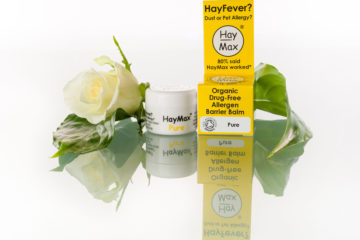 Why are our kids getting fatter?
Why are our kids getting fatter?
The NHS records that 26% of adults are classified as obese[i], and now it has been revealed that more than 22,000 children leave primary school severely obese, which is a tenfold rise in the proportion of children in this category since 1990.[ii]The cause of the rapid rise in obesity levels in both adults and children has been blamed on the ‘modern lifestyle’ in which we are heavily dependent on watching TV, social media, desk-bound jobs and high-calorie food.[iii]Our health experts have listed ways to adjust your lifestyle for both you and your family.
“What we eat and our body weight can have just as big an impact on our risk of disease as smoking or drinking. And second, that this is a risk factor that we can control, unlike some others such as genetics and age. The power is in our hands to make a change and stay healthy as we get older and raise a family. And this doesn’t mean having to follow a strict diet or never have any treats: simply turning away from processed foods and favouring ‘real’ foods and our 5 a day of vegetables and fruit, as well as getting regular exercise, can make a huge difference,” explains Nutritionist and Fitness Instructor Cassandra Barns.
Emotional attachment
 “Emotional or ‘comfort’ eating can be a key cause of weight gain. Because it doesn’t depend on hunger, comfort eating can often be uncontrolled – you don’t necessarily stop when you’re full. What’s more, the most ‘comforting’ foods tend to be sugary foods and carbohydrates, which are easy to overeat and can quickly lead to weight gain when consumed in excess,” explains Cassandra.
“Emotional or ‘comfort’ eating can be a key cause of weight gain. Because it doesn’t depend on hunger, comfort eating can often be uncontrolled – you don’t necessarily stop when you’re full. What’s more, the most ‘comforting’ foods tend to be sugary foods and carbohydrates, which are easy to overeat and can quickly lead to weight gain when consumed in excess,” explains Cassandra.
Also remember that children tend to mirror habits they learn from their parents – making it easier for them to slip into an unhealthy lifestyle early on. “Learning to manage your emotions in a different way can help stop emotional eating and help you lose weight if you need to do so. Exercise can be a great way to channel and relieve stress – you may do well with relaxing exercise such as yoga, or something more strenuous to ‘punch it out’ such as kickboxing. Journaling is another popular way to express yourself and let emotions come out,” adds Cassandra.
Keep the treats – but in moderation
When you completely cut-out those sweet treats from your diet, you can have a much higher chance of giving in and bingeeating. It’s much better to have a varied and balanced diet, that includes having treats, but just in moderation. It’s also important for children to learn that treats aren’t part of an everyday inclusion. “Our bodies cope much better when we eat in moderation as it has time to process the food. We cannot overload it without paying a price – your body has to deal with high amount of these foods in a short space of time, with your blood sugar going on a roller coaster of highs and lows and then trying to recuperate over the next few days before your next binge,” explains Leading UK Nutritionist Dr Marilyn Glenville (www.marilynglenville.com).
Read the labels
Do you choose the ‘gluten free,’ ‘sugar free’ or ‘low fat,’ option in the hope that it can help shift those stubborn pounds? Unfortunately, that’s exactly what could be increasing our fat around the middle. “If a food or drink is described as ‘low sugar’, ‘slim line’ or ‘diet’, it will usually contain an artificial sweetener. These sweeteners have been linked to mood swings and depression, and it has been found that people who regularly use artificial sweeteners tend to gain weight because they can slow down the digestive process and increase appetite,” explains Dr Marilyn Glenville, the UK’s leading Nutritionist (www.marilynglenville.com) and author of Natural Alternatives to Sugar.
Make exercise fun
Nutritionist and Fitness Instructor Cassandra Barns explains, “Exercising is an appetite suppressant. It stimulates the release of feel good hormones – the same ones, which are released by sweet or ‘junk’ foods, stopping the need for the food you are craving.” Dr Glenville adds, “Exercise or physical activity has never been more important. If you have fat around the middle of your body then exercise must become one of your priorities.”
Cassandra suggests to find a work out buddy or a fitness class that you love, so that exercising isn’t thought of like a chore. “Exercising on your own, whether it’s working out in the gym or going for a run, can be a joyless experience. But exercising with others in a class can be motivating and much more fun, especially if there’s great music too. When you try a class, give it two or three chances before you decide whether you want to continue or move on to something else: sometimes it takes a few weeks to start to learn the moves, feel comfortable and really get to love it.”
 For the little ones, a key point to remember when it comes to motivating your kids is that they often prefer ‘activities’ over conventional exercise, especially if it involves their friends or other kids of similar age. There are sporting clubs and community centres throughout the UK that keep kids active and having fun afterschool and during weekends with exciting activities including rock climbing, horse riding and trampolining.
For the little ones, a key point to remember when it comes to motivating your kids is that they often prefer ‘activities’ over conventional exercise, especially if it involves their friends or other kids of similar age. There are sporting clubs and community centres throughout the UK that keep kids active and having fun afterschool and during weekends with exciting activities including rock climbing, horse riding and trampolining.
Switch white for wholemeal
Dr Glenville suggests, “Swap to whole grain alternatives that release energy slowly. The carbohydrates in wholemeal bread are broken down slowly over several hours and so do not give any sudden flooding of sugars into the bloodstream. Also, this gradual release helps you to feel full for longer, suppressing your appetite and stopping you craving sweet foods because you are not on the blood sugar rollercoaster.”
Eat regularly
 Dr Glenville explains, “Try to keep your blood sugar levels and energy levels stable by eating regularly. Eat breakfast, lunch and dinner plus a snack mid-morning and one mid-afternoon, with no longer than three hours between. This will help stop those roller-coaster highs and sugar cravings because your blood sugar isn’t allowed to drop, your body will no longer have to ask you for a quick fix.”
Dr Glenville explains, “Try to keep your blood sugar levels and energy levels stable by eating regularly. Eat breakfast, lunch and dinner plus a snack mid-morning and one mid-afternoon, with no longer than three hours between. This will help stop those roller-coaster highs and sugar cravings because your blood sugar isn’t allowed to drop, your body will no longer have to ask you for a quick fix.”
Start making healthy and nutritious meals that the whole family can enjoy, and get the kids involved in the cooking process to make it a fun family activity. There are lots of quick and nutritious recipes available online for some inspiration in the kitchen. Swap the chips and chocolate snacks for occasional treats, and include everyday nutritious snacks like carrots and humous, apples with almond butter and avocado topped oatcakes.
Get the whole family involved in yoga
If you regularly do yoga at home why not get the kids involved, or both start it together? Yoga can be great for getting kids active, increasing flexibility as their muscles develop and preparing them for bed. Maija Kivelä, yoga instructor at holistic wellness boutique, Maître of Thyme (www.maitreofthyme.com) explains, “Yoga works on strength, flexibility, balance, agility, endurance, core and overall strength. Yoga also calms the nervous system, reveals the body’s habits and brings you back into your body, into yourself. Yoga can also increase your mindfulness and as a result, individuals will become more aware of what they are eating and make better eating choices, which will certainly help weight management.”
END













